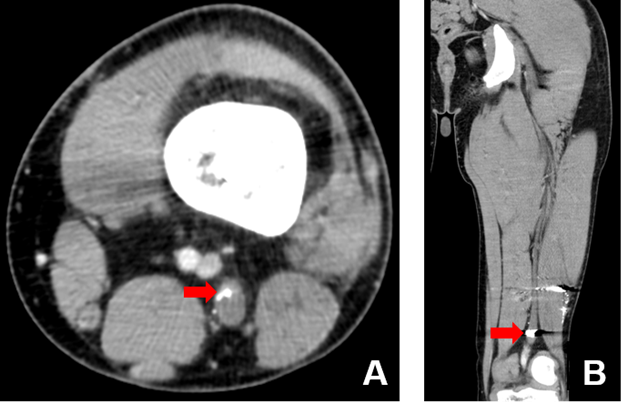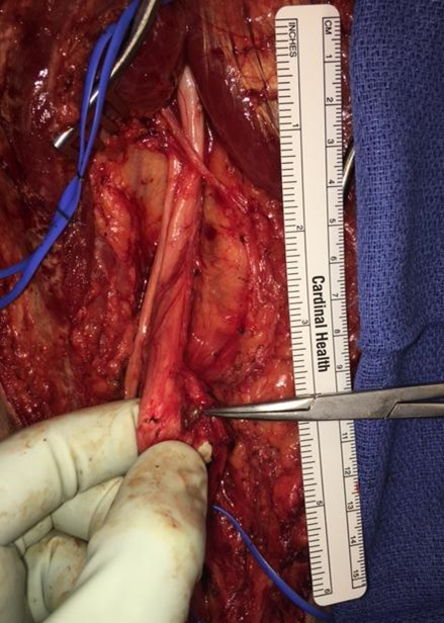Sciatic Nerve Injury After Gunshot Wound: A Role for Fat Grafting
Prashanthi Divakar, MD; Justin T Zelones, MD; Joseph Rosen, MD
Dartmouth-Hitchcock Medical Center, Lebanon, NH
Introduction Over 180 per million people develop peripheral nerve injuries annually. Gunshot wounds (GSWs) are a particularly challenging cause due to complications, such as soft tissue loss, vascular injury, and infection. We present a case of a patient with a GSW to the left thigh resulting in a distal femur fracture that required open reduction, internal fixation, and an intramedullary rod. Post-operatively, the patient was noted to have weakness, numbness, and pain in the affected leg. Computed tomography (CT) and electromyography (EMG) demonstrated injury to the sciatic nerve with perineural bullet fragments. The patient underwent neurolysis of the sciatic nerve and fat grafting. This is the first case in the literature of fat grafting after sciatic nerve injury in conjunction with neurolysis. Materials & Methods A CT scan one and a half months after injury demonstrated extensive ballistic fragments throughout soft tissues in the left lower thigh and adjacent to the sciatic nerve with associated fusiform thickening (Fig. 1). EMG three months after the accident revealed greater injury to the left tibial than the left peroneal divisions of the sciatic nerve. The patient underwent neurolysis of the sciatic, tibial, and deep/superficial nerves along with removal bullet fragments from the neuroma followed by and fat grafting four and a half months after initial injury (Fig. 2). Results The patient was seen one and a half months after the procedure with reports of improvement in left lower leg strength and function. On exam he had a well-healed posterior thigh incision, less plantar numbness, and increased ankle dorsiflexion. Conclusions Autologous fat grafting in other studies has shown a regenerative effect on scar tissue, peripheral nerve activity improvement, neuropathic pain relief, and extremity mobility in the setting of painful neuromas. This is the first published peripheral nerve injury case report of autologous fat grafting for sciatic nerve injury demonstrating motor/sensory function improvement and reduced neuropathic pain. Fat grafting should be considered an adjunct to neurolysis in complex peripheral nerve injuries.
Figure 1 
Figure 2
Back to 2018 ePosters
